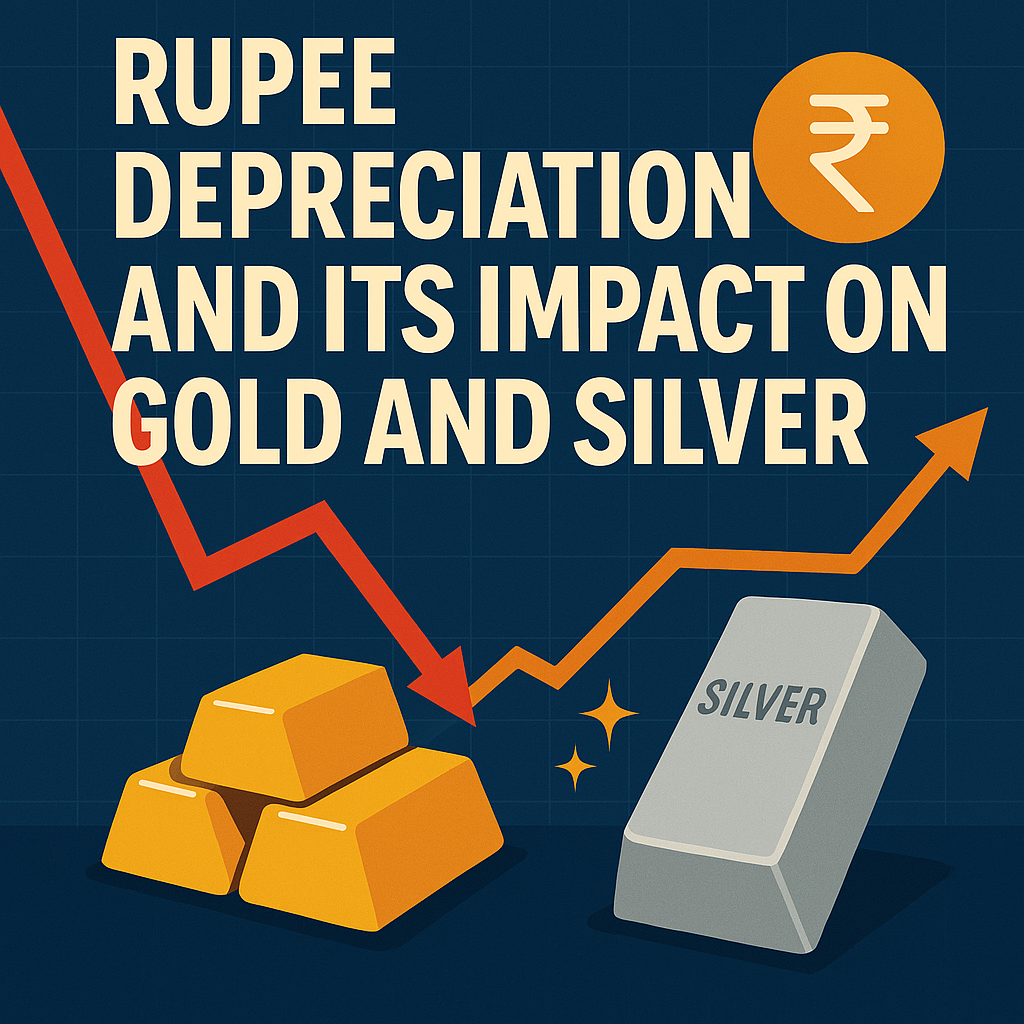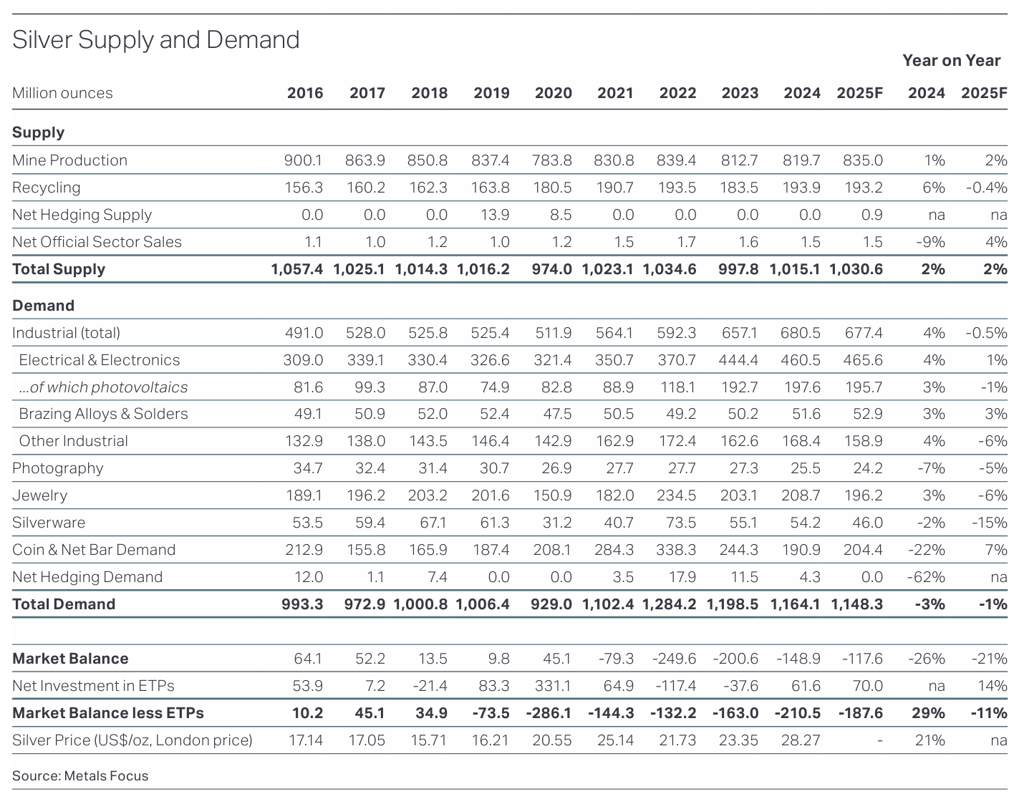How Rupee Depreciation Affects Gold and Silver Investments: A Portfolio Perspective
Ever noticed how people rush to buy gold whenever the rupee dips against the dollar? Or why silver sees sudden interest in uncertain times? If you're building your investment portfolio, understanding how currency movements—especially rupee depreciation—affect gold and silver can give you a smart edge.
Nagarjun
5/26/20254 min read


Whether you're a beginner or an experienced investor, this article will walk you through the connection between the rupee, precious metals, and their impact on your holdings—especially if you're investing via Exchange Traded Funds (ETFs).
Let’s decode this in a simplified and portfolio-focused way!
Rupee Depreciation in Simple Terms
When we say the rupee is depreciating, it means it takes more rupees to buy a single US dollar. For example, if USD/INR moves from ₹75 to ₹85, the rupee has weakened. This usually happens due to rising inflation, increasing imports, high fiscal deficits, or global uncertainties like war or economic slowdown.
Why does this matter? Because gold and silver are globally priced in USD, not INR. So, when the rupee falls, you need more rupees to buy the same amount of these metals—even if their global price remains the same.


Impact on Gold: The Classic Safe Haven
1. Gold as a Dollar-Hedged Asset
When the rupee weakens, gold becomes more expensive in India. For instance, if gold is $2,000/oz, and the rupee depreciates from ₹75 to ₹85, the local price rises—even if global gold prices stay flat. This makes gold an effective hedge against currency risk.
2. Portfolio Diversification and Inflation Shield
Gold performs well during inflationary periods and currency volatility. So, in times of rupee depreciation, adding or holding gold in your portfolio can preserve your wealth, especially when other assets like equities underperform.
3. ETFs and Sovereign Gold Bonds (SGBs)
ETFs track the domestic price of gold, which includes the rupee's exchange rate effect. That means your returns from a gold ETF are partially driven by currency movement. SGBs also benefit from depreciation, with added interest of 2.5% annually.
Silver: The Industrial Metal with a Twist
1. Price Sensitive but Volatile
Silver behaves similarly to gold in terms of rupee impact. When the rupee falls, silver gets costlier. But here’s the twist: silver has dual demand—investment and industrial. So, economic growth or industrial slowdown can influence its price more than gold.
2. Silver ETFs: A New Avenue
Silver ETFs have gained traction in India recently. These track the domestic price of silver, and just like gold ETFs, they get a lift when the rupee weakens. If your portfolio includes silver ETFs, keep an eye on both currency movement and industrial trends (EVs, solar, tech).
Rupee Depreciation and ETFs: What Happens Under the Hood
Whether it’s gold or silver, ETFs mirror the Indian spot price, which is a function of:
Global price in USD
USD/INR exchange rate
Import duties and GST
So, when the rupee depreciates:
✅ Global price constant + Rupee depreciates = Higher domestic prices
✅ Higher domestic prices = ETF NAV rises = Portfolio gains
This makes ETFs in precious metals an attractive component during periods of INR weakness.
Risks to Watch Out For
Every silver lining comes with its clouds:
If the rupee appreciates suddenly, ETF prices can drop even if gold/silver holds value globally.
Currency volatility can also increase premium spreads in ETF trading.
Import duties or government policies (like imposing restrictions or altering tax) can affect domestic pricing.
Practical Tips for Your Portfolio
Diversify Wisely: Don’t go all-in on gold/silver. Allocate 10–15% of your portfolio as a hedge.
Use ETFs or SGBs: These are liquid, transparent, and regulated. Avoid storing physical gold unless necessary.
Track Currency Trends: If USD is strengthening, it's usually good for your gold/silver holdings.
Stay Consistent: Invest through SIPs in gold/silver ETFs to average your cost.
Set Goals: Use gold/silver as tools to meet specific objectives (e.g., gifting, marriage, inflation protection).
Currency Moves Are Opportunities in Disguise
In a globally connected economy, currency movements are inevitable. Instead of fearing rupee depreciation, wise investors see it as a chance to rebalance their portfolio. Gold and silver—especially through ETFs—offer a cushion when the rupee stumbles.
But remember, investing without proper strategy is like walking blindfolded. While blogs and market updates help, a personalized investment plan tailored to your goals and risk profile makes all the difference.
Want to Explore Further?
If you're unsure how to fit gold, silver, or ETFs into your investment plan, it’s best to connect with a registered investment advisor. They’ll help you align your asset allocation with your life goals, income, and market realities—like rupee depreciation.
👉 Join our WhatsApp community or visit our website to get expert insights, updates, and portfolio strategies— https://whatsapp.com/channel/0029VbApa62J3jusDzwpft3w
FAQ's - Frequently Asked Questions
1. What is rupee depreciation?
It means the Indian rupee loses value compared to foreign currencies like the US dollar.
2. How does rupee depreciation affect gold prices in India?
Gold becomes more expensive in INR because it’s priced in USD globally.
3. Are gold ETFs a good investment during rupee depreciation?
Yes, because they benefit from rising domestic gold prices, driven by a weak rupee.
4. Does silver behave the same way as gold during currency depreciation?
Largely yes, but silver is more volatile due to industrial demand.
5. How much gold or silver should I have in my portfolio?
Typically, 10–15% as a hedge, but exact allocation depends on your financial goals.
6. Should I buy physical gold or go for ETFs/SGBs?
ETFs and SGBs are safer, more liquid, and offer better tracking without storage issues.
7. Can rupee appreciation reduce my returns in gold ETFs?
Yes, if the rupee strengthens, your ETF returns may drop even if global gold prices stay the same.
8. What are silver ETFs, and are they new in India?
Yes, they’re relatively new. Silver ETFs track silver prices in INR and are good for portfolio diversification.
9. Does rupee depreciation affect other asset classes too?
Yes. It impacts imported goods, fuel, stocks with foreign exposure, and inflation-linked investments.
10. Is it a good time to invest when the rupee is falling?
It depends. For precious metals, yes. But for other assets, seek guidance to avoid risk.
to schedule a free introductory appointment
+91 81234 26999
FINSPIREYOU@OUTLOOK.COM
NEWSLETTER
© 2025 by Sukruthi Finspire You
Registration granted by SEBI (INA000020493) , Membership of Bombay Stock Exchange (BSE Enlistment number 2288), and certification from the National Institute of Securities Markets (NISM) in no way guarantee the performance of the Investment Advisor or provide any assurance of returns to Investors. Investments in the securities market are subject to market risks. Read all the related documents carefully.
ARJUN K A
pROPRIETOR sUKRUTHI
